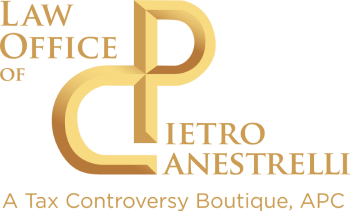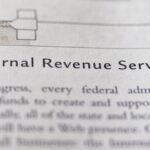What They Are, Who Should Pay Them, and When
For many taxpayers, managing tax obligations involves more than simply filing an annual return. While traditional employees have taxes withheld from each paycheck, others—especially self-employed individuals and those with income from investments or rental properties—need to stay proactive by making estimated tax payments throughout the year. This article explores the ins and outs of estimated tax payments, explaining who should pay estimated taxes, how they work, and essential quarterly tax payment deadlines to keep in mind.
What Are Estimated Tax Payments?
Estimated tax payments are a method by which individuals, businesses, and other entities can meet their federal and state tax obligations on income that isn’t subject to withholding. Instead of paying in a lump sum at year-end, estimated payments are typically made quarterly, allowing taxpayers to avoid a large tax bill at tax time. This approach is especially relevant for those with self-employment income, investment income, or rental income. Making estimated tax payments also helps avoid penalties and ensures tax compliance.
Types of income that often require estimated tax payments include:
- Self-employment income: Freelancers, independent contractors, and small business owners usually need to make estimated payments.
- Investment income: Income sources such as interest, dividends, and capital gains often necessitate estimated tax payments.
- Alimony (if taxable): Although recent tax law changes altered the tax treatment of alimony, it may still apply in certain cases.
- Rental income: Real estate rental income is typically untaxed, requiring separate estimated payments.
- Other income sources: This includes unemployment compensation, the taxable portion of Social Security benefits, and gambling winnings.
By making estimated tax payments, taxpayers can manage their obligations in a more organized way and avoid the stress of a significant tax bill in April.
Who Needs to Make Estimated Tax Payments?
The IRS has clear guidelines on who should pay estimated taxes. Taxpayers who anticipate owing $1,000 or more in taxes after accounting for withholding and refundable credits are generally required to make estimated payments. These payments apply to both individuals and businesses, with a slightly lower threshold of $500 for corporations. Here are some cases in which estimated tax payments are necessary:
- Individuals: Those receiving income without withholding—like self-employed individuals or those with significant investment income—should make estimated payments if they expect to owe $1,000 or more in tax.
- Corporations: Corporations that anticipate owing $500 or more in taxes must also make estimated payments.
Failing to meet these thresholds can lead to penalties, even if a taxpayer files a complete and accurate return at year’s end.
How Are Estimated Taxes Calculated?
For those wondering how to calculate estimated taxes, it can be challenging, especially when income varies. The process involves estimating income, deductions, and credits accurately for the entire year. Here are the basic steps:
- Estimate Your Annual Income: Add up all forms of income you expect to receive, including self-employment earnings, investment income, and other taxable sources.
- Determine Your Deductions and Credits: Deduct eligible expenses and apply any tax credits, which can help reduce the total taxable income.
- Use IRS Form 1040-ES: The IRS offers Form 1040-ES as a worksheet to help individuals calculate their estimated taxes accurately.
While this worksheet is helpful, many taxpayers opt to work with a tax professional or use tax software for accurate tax payment calculations. Since estimated payments depend on income projections, it’s often necessary to adjust payments if your income changes throughout the year.
When Are Estimated Tax Payments Due?
Estimated tax payment deadlines are quarterly, with four payments due throughout the year:
- April 15: First payment
- June 15: Second payment
- September 15: Third payment
- January 15 of the following year: Fourth payment
If any of these dates fall on a weekend or holiday, the IRS typically extends the deadline to the next business day. An exception is offered if you file your tax return by January 31 and pay any remaining balance—under these conditions, you may skip the fourth payment for the previous year.
Meeting these deadlines is crucial to avoid penalties and interest, making tax management simpler and more organized.
How Do You Make Estimated Tax Payments?
The IRS provides various methods for making estimated tax payments, allowing taxpayers to choose the most convenient option:
- IRS Direct Pay: The IRS offers a secure online portal for quick, direct payments.
- Electronic Federal Tax Payment System (EFTPS): This government-run platform allows taxpayers to set up payments in advance, ensuring timely payments.
- IRS2Go Mobile App: Using the IRS mobile app, taxpayers can make payments directly from their mobile devices.
- Mailing Form 1040-ES Vouchers: Some prefer mailing a check along with Form 1040-ES vouchers.
Whatever the method, it’s essential to keep a record of all payments to ensure accurate tax accounting when filing the annual tax return.
What Happens If You Don’t Pay?
Failing to make estimated tax payments can lead to penalties and interest. The IRS expects taxpayers to make quarterly payments if withholding or other payments do not fully cover their tax liability. Penalties may apply if:
- You didn’t pay enough based on your quarterly tax liability.
- You paid late, even if the full tax amount is eventually paid.
To avoid penalties, the IRS allows taxpayers to follow a safe harbor rule. By paying at least 90% of the current year’s tax liability or 100% of the previous year’s liability (110% if your adjusted gross income exceeds $150,000), you can avoid underpayment penalties.
Who Might Not Need to Pay Estimated Taxes?
Certain taxpayers are exempt from estimated tax payments if they meet specific criteria:
- Wage Earners with Sufficient Withholding: If your income is primarily from wages with adequate withholding, estimated payments may not be necessary.
- Individuals with Low Tax Liability: If you expect to owe less than $1,000 after accounting for withholding and refundable credits, you typically won’t need to make estimated payments.
- Taxpayers with Zero Prior-Year Tax Liability: If you had no tax liability in the previous year, you may also be exempt from making estimated payments.
These exemptions provide some relief for taxpayers, particularly those without significant self-employment or investment income.
Special Considerations for Self-Employed Individuals and Small Business Owners
Self-employed individuals and small business owners often face unique challenges regarding estimated tax payments. Without an employer to withhold taxes, they need to manage their obligations proactively. For many, this means keeping accurate records of income and expenses throughout the year.
Working with a tax professional can help self-employed individuals navigate their estimated payments, ensuring compliance and taking advantage of eligible deductions. The right strategy can make a big difference, especially when income varies.
Final Thoughts
For taxpayers without regular withholding, making estimated tax payments is critical to staying compliant and avoiding penalties. Quarterly payments can make tax season less stressful, preventing large, unexpected tax bills.
The process can be complex, especially for those with fluctuating income. Consulting a tax professional can help you calculate your estimated payments accurately, ensuring compliance with IRS rules and providing peace of mind. At The Law Office of Pietro Canestrelli, we specialize in assisting clients with their tax obligations, including managing estimated tax payments and other financial concerns. Contact us today to learn more about how we can support you in meeting your tax obligations and staying on track with IRS requirements.




